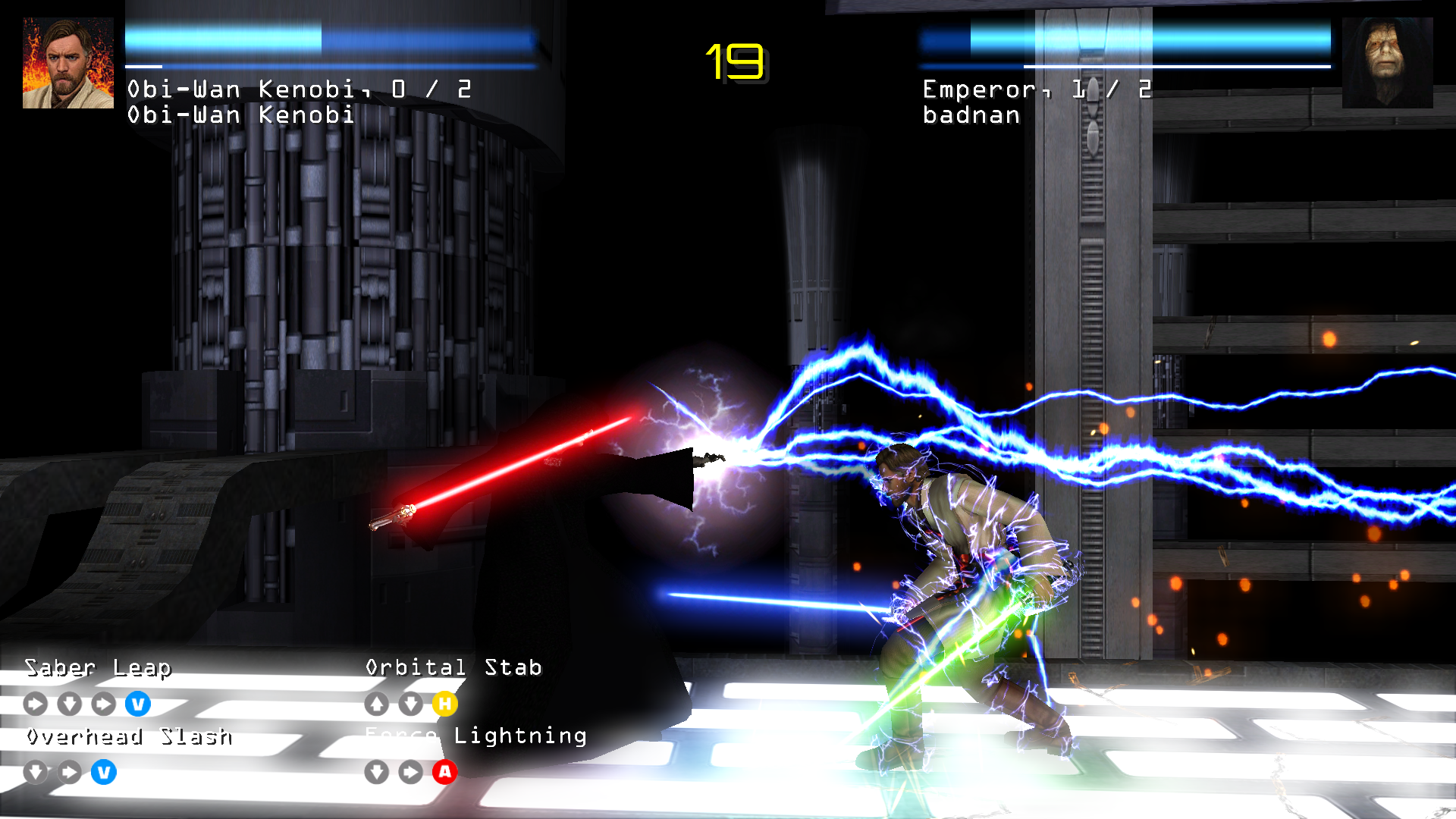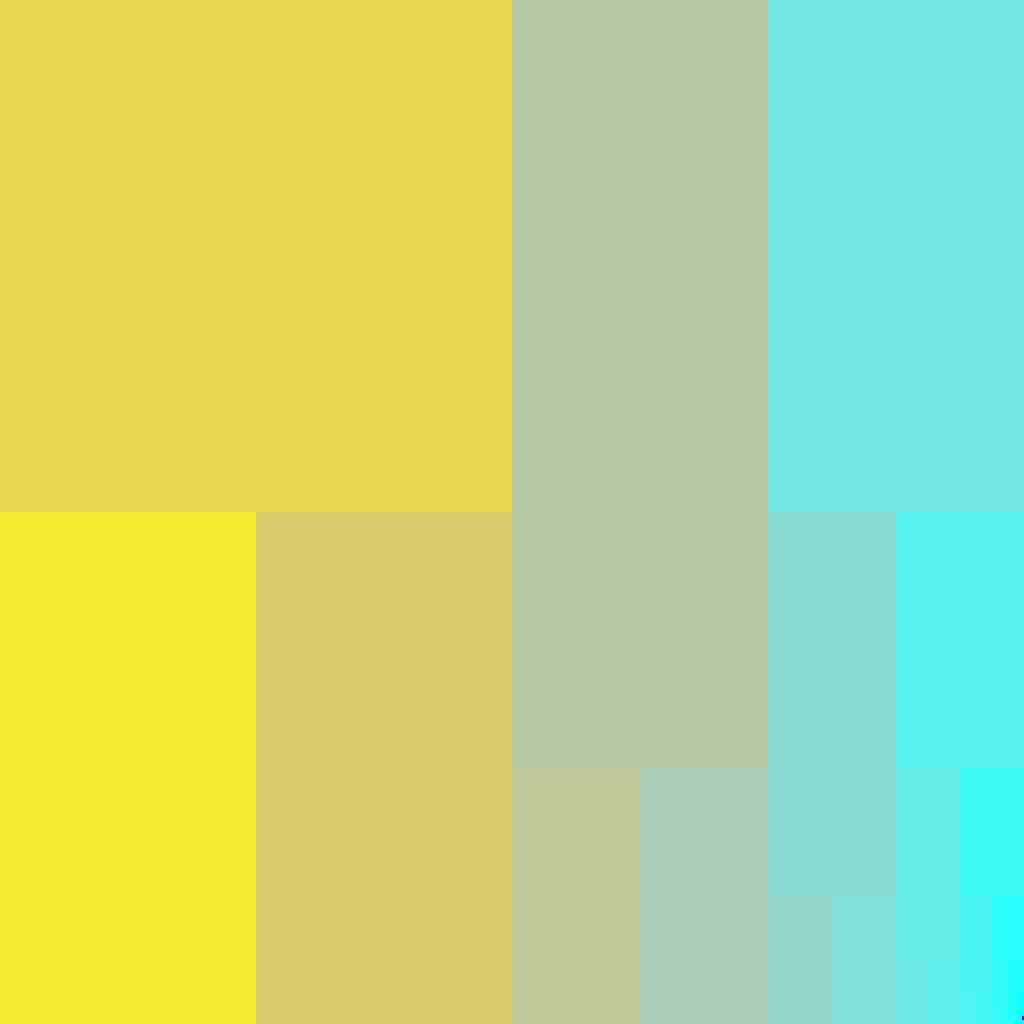|
Jewel posted:The link to mandelbrot.fut seems to be broken! I don't have access to the futhark-benchmarks repo. Sorry, fixed.
|
|
|
|

|
| # ? May 14, 2024 13:40 |
|
 Working on a rippling water effect for our stage lighting. Does anyone know how to convert a color value (RGB or HSV) to red, cyan, green, yellow, blue, and magenta values (I don't know, RCGYBM)?
|
|
|
|
Jewel posted:The link to mandelbrot.fut seems to be broken! I don't have access to the futhark-benchmarks repo. ah! is that some form of runic benchmark? futhark - the first 6 characters of the runic alphabet.. Feoh, Ur, THorn, Anser, Rad, Ken
|
|
|
lord funk posted:
Aren't RGB used in additive color mixing and CMY used in subtractive?
|
|
|
|
|
lord funk posted:
High school physics revisit: your stage light emits a white-ish light (look up what your lamps are, what brightness they are at max, and what temperature they are), which has all colors in the spectrum. Red gels are filters that let red-light through. Yellow filters are filters that let red and green light through. You should be able to get a rating for your gels. The eye, being a buggy piece of analog technology, has detectors for red, green and blue light ("cones"). When it sees equal hits of red and green, it thinks it's being hit with pure yellow light, because that's all the sensors detect. Your gels should have ratings on them which tell you what color they'll filter white light to. Cyan, Yellow and Magenta cels are often used in cheaper productions (or in difficult spots to hit with multiple lights) because you get two colors per lamp. So, hitting something with both yellow and red gels means you have an orange result (two reds, one green). Knowing how many gels you have of each, how many lamps you have, you should be able to whip up something. Does that make sense?
|
|
|
|
Athas posted:I have an image of a Mandelbrot fractal: Very nice. Now generate the Julia set!
|
|
|
|
Suspicious Dish posted:Does that make sense? Totally - except I didn't mention that I've got an array of LED lights, so I actually have LEDs for Red, Yellow, Green, Cyan, Blue, and Magenta (what I would have called a dark Purple). Tried to take a picture of it below. I could just use the RGB, but I'd like to take the time to figure out a proper way to do it to use all the colored LEDs.
|
|
|
|
That's bizarre. I don't know of any LEDs that emit pure cyan light, other than specialized, expensive equipment like from LXN or Cree. Are you sure they're not white LED lamps with gels, or a combo of blue/green LEDs? To do it "properly", you need to know the minute details. If you wing it, you'll get close enough that during a show with changing lights nobody will actually care. Starting with HSL, get the luminance values by adjusting the brightness of all values at once. Then start adjusting the hue -- turn down your cyan lamps and turn up your red lights for a redish tint, etc. That adjusts both saturation and hue, technically. Play around with this and you should get a model for it eventually.
|
|
|
|
It's tough to get a picture of it, but there are separate DMX channels for the light blue (cyan) and regular blue. It's not a big deal, but it would be nice to be able to send a yellow value instead of red+green, since there is a whole row of yellow LEDs up there. Quick video in action: https://www.youtube.com/watch?v=VWLaU9p_R8A
|
|
|
|
Suspicious Dish posted:That's bizarre. I don't know of any LEDs that emit pure cyan light, other than specialized, expensive equipment like from LXN or Cree. Are you sure they're not white LED lamps with gels, or a combo of blue/green LEDs? Those are probably ETC Selador fixtures, which do use seven distinct wavelength LEDs in their array. They haven't really caught on in most places because of the expense - an RGBAW array is just as good for most uses, and doesn't require rare LEDs. E: docs https://www.etcconnect.com/Products/Lighting-Fixtures/Selador-Classic/Selador-Lustr-LED/Documentation.aspx
|
|
|
|
lord funk posted:
Illumination is additive, so your output can be expressed as some linear combination of an arbitrary number of components. Usually this is Red/Green/Blue -- or, more correctly, whatever the primaries are for the color space you're operating in (which are monochromatic 700nm Red, 546nm Green, and 436nm Blue/Violet for CIE RGB). However, there's no reason you can't add more components. If they are chosen correctly, this allows you to have a much percentage of the perceptual gamut covered than the traditional triangular 3-component space would allow (as well as providing for probably more efficient lighting, since you need a lot more power in Blue wavelengths than Green ones for the same perceived brightness). You might also have more than three primaries because single wavelength illumination isn't the same as broad-band illumination, and so having more primaries lets you better model "full spectrum" lighting. The MOST CORRECT way to do it would be: 1) Determine the color space your "color values" are actually outputting. Your monitor is probably outputting sRGB, but it's quite likely that the stage lights have a wider gamut than that (for reasons mentioned earlier). This doesn't really matter unless you care a lot about how the colors on the screen map to the colors on the stage. Either the colors on the screen will be less colorful and have their hues clamped/compressed, or the colors on the stage will be limited to the sRGB gamut (and may be less vibrant than the light is actually capable of). In some sense you can kind of skip this step to start, but that just means you're making some implicit decisions/not worrying about the mapping from display to actual lighting. One option would be to do all your simulation in XYZ space (which uses imaginary colors) which will make step 3 trivial. To display on your monitor, just do an XYZ-sRGB transform first, clamping the final color values to the sRGB gamut. 2) Determine the color coordinates of each of your primaries in xyY space. You can start with educated guesses using an annotated CIE 1931 chromaticity diagram. Once you've got the system working, you can tweak them a little bit if the output seems biased to one shade or another. 3) Transform your sim output to xyY. If you had RGB values, you do this by transforming to XYZ first. This is just a matrix multiplication, with the transform matrix depending on your primaries (i.e. the color space). For sRGB, you multiply your input color by this: code:code:4) Compute the relative proportion of the primaries to produce the output Find a solution to the following linear equation: code:The 'x' and 'y' values above are the coordinates for the primaries you determined in step 2. You want to solve for the various K values, which will be the relative brightness of each output. Since you're solving 6 variables over 2 equations, the results will be under-constrained, meaning you've got multiple sets of values that produce the same percieved color. This is what's called "Metamerism". Pick a heuristic to simplify the problem however you want. One option might be to compute the distance in xy space to each of the primaries, and then only solve for the furthest 1 and the nearest 2. 5) Adjust outputs based on desired luminance Scale the computed K values by the Y value from step 3. This is your brightness for each primary. Note that this might not technically be correct, depending on what your desired white point is, etc. Hubis fucked around with this message at 20:25 on Jan 12, 2016 |
|
|
|
(multi-posting for clarity) That being said, a quick and dirty way to do it would be the following: 1) Convert your sim output to HSV 2) Determine the two primaries on the color wheel that your H value lies between. Hue values are as follows: Red: 0 Yellow: 60 Green: 120 Cyan: 180 Blue: 240 Magenta: 300 https://upload.wikimedia.org/wikipedia/commons/3/33/Hsv-hexagons-to-circles.svg 3) Determine the saturated color output based on Hue and the two primaries. If H were 30, for example, your saturated output would be: R = 0.5 Y = 0.5 G = 0.0 C = 0.0 B = 0.0 M = 0.0 If H were 195, it would be R = 0.0 Y = 0.0 G = 0.75 C = 0.25 B = 0.0 M = 0.0 4) Based on the Saturation value, determine the actual color output A color with 0 saturation would produce R = Y = G = C = B = M = (1/6) So using the S value, linearly interpolate from the unsaturated value (1/6) to the saturated color determined in step 3 to produce your final component proportions. code:Take the relative component values from step 5 and multiply them by V to give you the final overall brightness.
|
|
|
|
You are awesome Hubis. Thanks - that was really helpful.
|
|
|
|
lord funk posted:You are awesome Hubis. Thanks - that was really helpful. Glad to help -- it's fortunate that I happened to just be doing a lot of reading on color spaces recently  Another way of thinking of that second method, btw, is just thinking of the color space as a hexagon made of 6 triangles, with the pure colors at the edges and middle-grey at the center. Then you use Hue to determine which triangle you fall into, which gives you the three 'primaries' you want to use (middle grey, and the two saturated colors).
|
|
|
|
lord funk posted:It's tough to get a picture of it, but there are separate DMX channels for the light blue (cyan) and regular blue. It's not a big deal, but it would be nice to be able to send a yellow value instead of red+green, since there is a whole row of yellow LEDs up there. just wondering if having a low steady color/brightness across the whole scene then adding the ripple as a rise in brightness/shade might work better, or the other option to suggest underwater would be random dappling to suggest choppy water, But always with a steady background color/shade/brightness to show its modified with the ripple and not the ripple creating light.
|
|
|
|
TheresaJayne posted:just wondering if having a low steady color/brightness across the whole scene then adding the ripple as a rise in brightness/shade might work better, or the other option to suggest underwater would be random dappling to suggest choppy water Hubis you weren't kidding about the LEDs being able to produce colors the laptop monitor doesn't at all. I've got two implementations: one that translates RGB into the 7 color values, and the second 'quick and dirty' implementation you posted above. The latter is better at producing the full range of color, but at 0% saturation the lights are very dim (all at 1/6 strength). I'm messing around with ways to keep the brightness up as the saturation goes down.
|
|
|
|
lord funk posted:I'm totally with you there. I've got a minBrightness value and some scaling parameters in there to lesson the full on/off effect. Makes it a lot more natural looking. The piece we're playing is going to slowly ramp from choppy/bright water to steady/deep water over 30 minutes. I almost posted something about this, but figured it might not be a problem. It could be that the perceived brightness might be nonlinear to the numbers you're feeding to the system. One option would be to modify your 'white point' (the 1/6th middle grey) to be brighter, so that as you desaturate you're doing so to a brighter color. This still assumes it's linear, but might be enough to fix the problem. Note that you could also make the white point non-uniform (vary the brightness of different components) to tint the color somehow if you wanted. Another option would be to multiply your final brightness by a uniform saturation scale factor. In other words, something like code:Finally, it might be some sort of gamma-like issue. You could try scaling all your individual components by a gamma factor before output: code:This would amplify color components with low brightnesses, and leave high brightnesses mostly unchanged. This is akin to the gamma transforms you have to do when outputting a color to the screen when rendering in sRGB. Note that this would have the effect of reducing saturation somewhat, but might be more perceptually correct.
|
|
|
|
Slowly still working on this, from time to time. Right now is one of those times. (Internet Janitor, I haven't forgotten)
|
|
|
I've been working on an Expression class that gets created with a string containing a mathematical function, with the current goal of making a basic graphing calculator-like program, just for kicks. So far the class takes the function string (in traditional infix notation) and converts it to reverse-Polish notation so it can be evaluated quickly and easily using a stack. I've been working on it all night, and this is what I've got so far. I'm pretty excited about where I can take this. You might notice that when it tokenizes the input string, it interprets '–' signs in front of parentheticals, functions, and variable names as a function ("neg"), while numeric constants get to keep their minus signs. I figured this would be the easiest way for me to represent and handle it internally. EDIT: Well, I've got some good progress! Here's what we get as output (when 'x' = 2):  It can evaluate the expression now, but I'm not 100% satisfied with my implementation of it. Right now it uses a switch-case to branch based on an operator or function token's embedded ID (which op or function to use), but I think I might be able to improve the speed slightly by invoking functions by address. This might improve speed slightly, or it might not. It depends on if making a lot of function calls will thrash the call stack and chew up extra time. Neurion fucked around with this message at 12:16 on Jan 17, 2016 |
|
|
|
|
working on an open source game lets you get the high of 'press button, thing happens' without having to put in all the effort! https://www.youtube.com/watch?v=nvtwyW32t00
|
|
|
|
I've been working on Jedi Fighter, a 2D fighting game mod for Jedi Academy, off and on for a couple of years. I started it when people actually still played Jedi Academy in 2003, but put it aside for real life. The release of The Force Awakens spurred me to get this drat thing done. Beta 2 got released this week! Random screenshots:   Here is a somewhat old beta 2 teaser trailer. https://www.youtube.com/watch?v=GgjF0pwuhzU The main mod site is here on moddb: http://www.moddb.com/mods/jedi-fighter, and there's a more technically oriented thread on JKHub: http://jkhub.org/topic/6965-jedi-fighter-beta-2-released/
|
|
|
|
Gul Banana posted:working on an open source game lets you get the high of 'press button, thing happens' without having to put in all the effort! I like the physics of it but I don't think I get what you're supposed to do. You get near some other ships that just dart away, there's some missiles that miss, etc. I guess you can just fly around and enjoy the universe with no fear of dying? Either way I wanna play it some time.
|
|
|
|
Gul Banana posted:working on an open source game lets you get the high of 'press button, thing happens' without having to put in all the effort! The new Escape Velocity is shaping up to be a real monster. <googles endless sky> Huh! Awesome!
|
|
|
|
skew posted:I've been working on Jedi Fighter, a 2D fighting game mod for Jedi Academy, off and on for a couple of years. I started it when people actually still played Jedi Academy in 2003, but put it aside for real life. The release of The Force Awakens spurred me to get this drat thing done. I literally just saw an article about this, posted it to my friends on FB as something we should check out. Very impressive! As a free mod you guys managed to completely blow away Masters of Teras Kasi (the real licenced star wars fighting game) and also do some really crazy poo poo the jedi outcast engine was never supposed to do. Great work!
|
|
|
|
^^^ holy loving poo poo that is awesome I'm making this dinky little 2d level editor 
|
|
|
Not a very flashy screenshot, but here it is! My first try at implementing a random text generator. So far here is roughly how it works: It reads in all the text files out of a given path. It breaks all of those text files into sentences.(Or at least tries to.) It breaks those sentences into words. For each unique word, it generates a list of possible following words and how often it is the first or last word of a sentence. It then uses those probabilities to chain together words into what could almost be called sentences. I smirk every time it gives me something that is actually a coherent sentence. wilderthanmild fucked around with this message at 13:08 on Jan 28, 2016 |
|
|
|
|
Zaphod42 posted:I literally just saw an article about this, posted it to my friends on FB as something we should check out. Very impressive! Thanks. I'd love to hear what you think if you guys try it. Looks like I broke something with some of the force powers right before release, so Carnor Jax's saber throw won't work right but everything else should mostly work. skew fucked around with this message at 06:13 on Jan 29, 2016 |
|
|
|
Tiling program & gradient/effect generator, first foray into working with graphics:   Want to use a DSL to specify tiling scripts, even if it's just aping the one from SICP. Also want to get some more complicated tiling patterns like Penrose working on it.
|
|
|
|
This has been a side project I've been chipping away at for some time. A group of us at work have a D&D group and since all of the character sheet apps available for Android were garbage I decided to roll my own. It's probably 90% complete at this point and supports importing data that Fight Club 5e for iOS uses. We'll likely opensource this and publish it eventually so for that reason we rely on the data import so that there aren't any copyright issues.   This is actually one of 3 apps that we now use to drive our game. We also have a fairly mature Android TV app that displays player statuses and is currently being reworked to also be a combat display:  The third app is a far newer and less mature DM app that allows the DM to illustrate the game world by drawing on screen (previously he did this on a whiteboard) and it facilitates initiative ordering, organizing how battles play out, etc.' edit: added the title screen Ferg fucked around with this message at 16:00 on Feb 8, 2016 |
|
|
|
Dude, that looks awesome as gently caress.
|
|
|
|
Ferg posted:This has been a side project I've been chipping away at for some time. A group of us at work have a D&D group and since all of the character sheet apps available for Android were garbage I decided to roll my own. It's probably 90% complete at this point and supports importing data that Fight Club 5e for iOS uses. We'll likely opensource this and publish it eventually so for that reason we rely on the data import so that there aren't any copyright issues. As someone learning to DM and about to run a game: any way we can get an .apk of that? 
|
|
|
|
Shalinor posted:Woooaaaah. I'm planning on opensourcing d20 very soon. The DM app (Master) is part of the same repo but still needs some work so I can't give you much of a timeframe. We have another session on the 16th and the hope is that we have Master and Tavern updated to be usable in a rudimentary state.
|
|
|
|
I just finished converting an old Processing project I had to Processingjs. No idea why they dropped support for javascript, I'd say that Java is more on the way out than it. In any case, it's inspired by all the fake computery stuff that you see on televisions and videogames  Link here It's designed to work like a screensaver, so full screen that sucker. Prefect if you feel that you've been spending too much time googling things on stackover flow and trying to figure out what the hell you did last week and not surfing the screaming neon edge of the cyberstreets. If you hit enter it'll automatically spawn / resize a box -- the default value is tuned pretty slow. Also if you type in 'help' and hit enter (or hit the tilde button) things will start flashing red, just like a real emergency! No big "HACKED" flashing on the screen with a skull though.
|
|
|
|
RoboCicero posted:I just finished converting an old Processing project I had to Processingjs. No idea why they dropped support for javascript, I'd say that Java is more on the way out than it. You seen this site? http://www.hackertyper.com/
|
|
|
|
Started writing a pacman clone in Javascript I need to add some AI and make it a 'game' but I have the basic stuff working. I'll post the source on github or something in a few weeks when I am okay with how it works. I've only been working on it a few hours a week. 
|
|
|
|
Not a screenshot as much as a demonstration of my latest hardware project that I am kinda fiddling with code for. 
|
|
|
|
clockwork automaton posted:Not a screenshot as much as a demonstration of my latest hardware project that I am kinda fiddling with code for. Nice hips dude
|
|
|
|
clockwork automaton posted:Not a screenshot as much as a demonstration of my latest hardware project that I am kinda fiddling with code for. That looks pretty nice. With a decent marketing effort behind it, you can probably sell the business and retire in a few years.
|
|
|
|
Bob Morales posted:Started writing a pacman clone in Javascript
|
|
|
|

|
| # ? May 14, 2024 13:40 |
|
ATM Machine posted:For (almost) everything you could want to know about pacman, there's this. Which might be more than you'd ever want to know for a pet project. I've been reading that off and on - not quite trying to do a 100% clone but it's got a lot of useful information in it
|
|
|

































